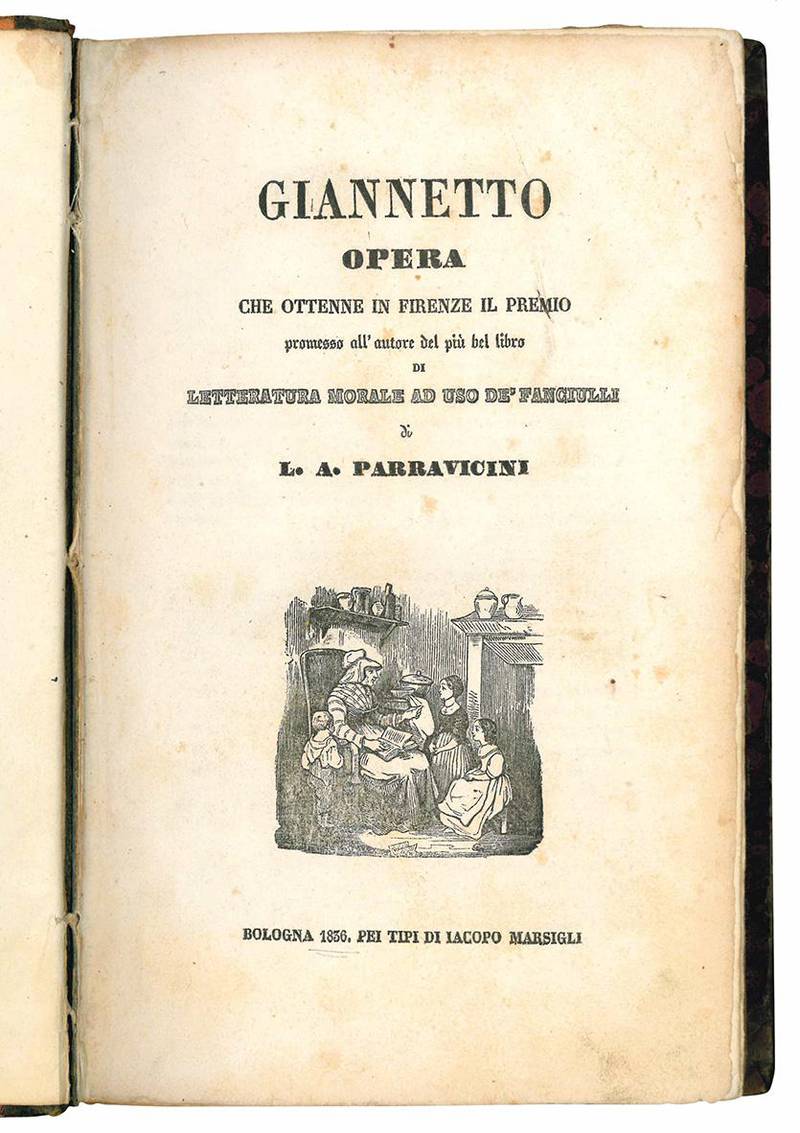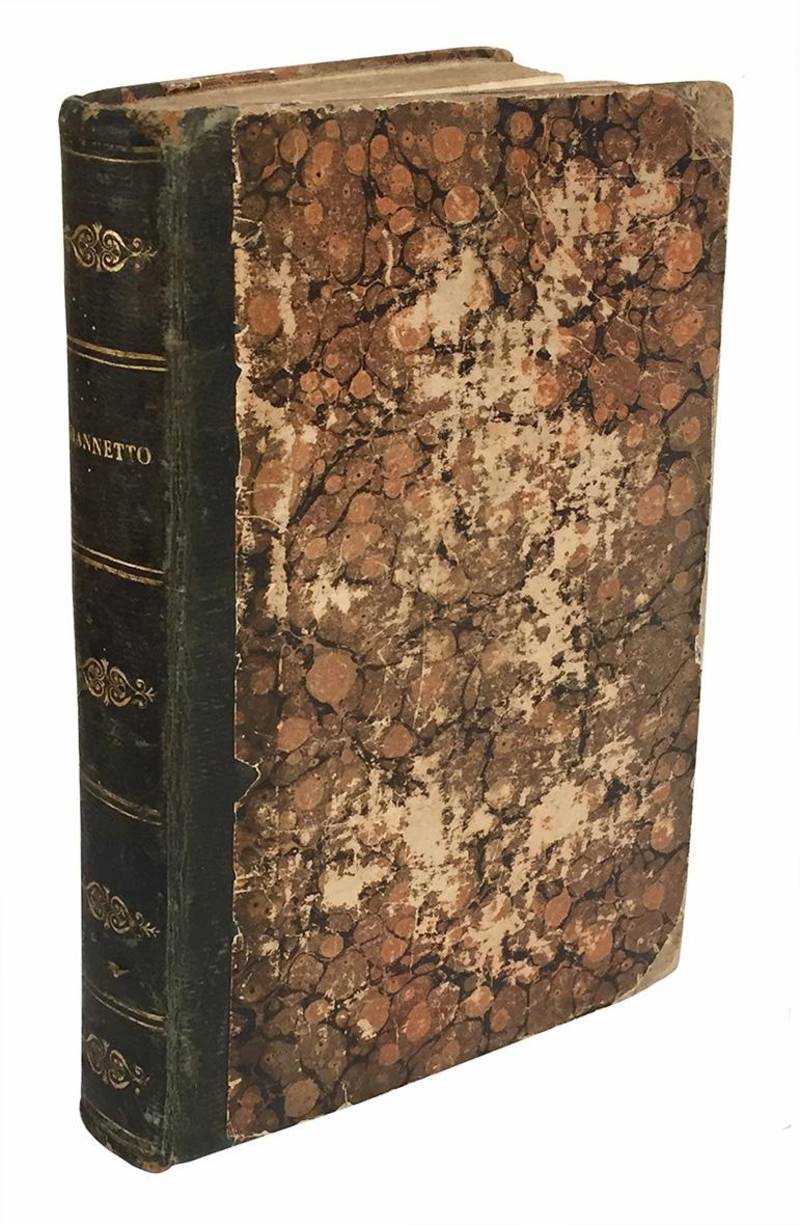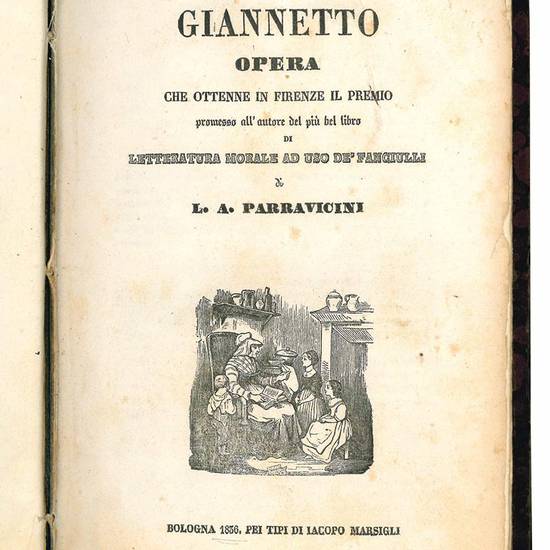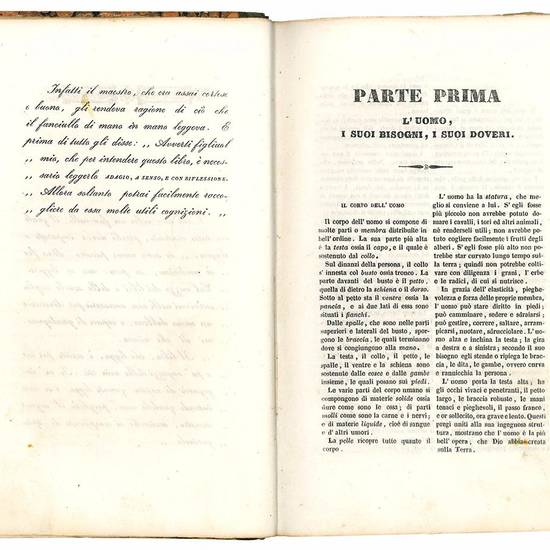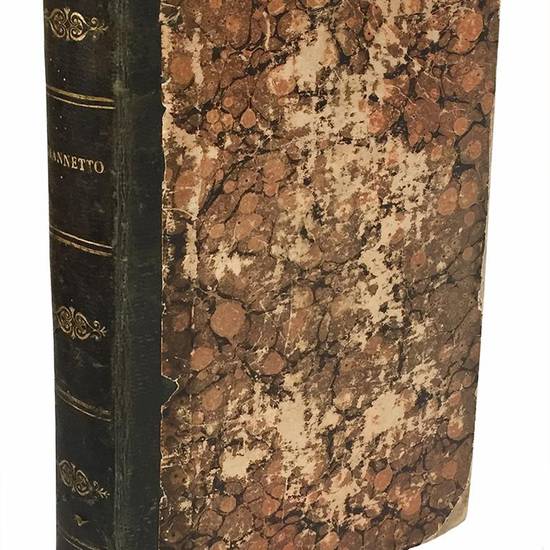THE MOST IMPORTANT ITALIAN CHILDREN'S BOOK BEFORE PINOCCHIO
8vo (210x129 mm). 386, [2] pages. Pagination leap at the beginning of the volume. Small vignette on the title-page. Text printed in two columns. Contemporary half calf gilt (slightly worn and rubbed). Light scattered foxing, minor marginal paper loss to a few leaves, small tear to the lower outer corner of the last leaf with not affecting the text. A good, genuine copy.
Very rare first edition, not mentioned in the reference works which quote the 1837 Como edition as the first (see Dizionario enciclopedico della letteratura italiana, IV, pp. 266-267).
On 23 December 1835, the "Society formed in Florence for the diffusion of the method of reciprocal teaching" announced a prize of one thousand lire to be awarded to the author of "an original Italian work that would serve as both an exercise in reading and moral instruction for children". Of the four manuscripts received, the two that most impressed the Commission were Cesare Cantù's Letture giovanili and Luigi Alessandro Parravicini's Giannetto. The prize was eventually awarded to the latter, perhaps due to Cantù's excessive Catholic moralism, but both works proved to be successful.
The Giannetto, a manual for basic education, consists of five parts. The first deals with the man from both an anatomical and a behavioural point of view. The second part deals with the trades, arts and sciences. The third deals with the earth from a geographical and naturalistic point of view. The fourth part gives daily examples of virtue for the instruction of the children. The fifth and last part, divided into twenty-seven days, narrates patriotic and moral episodes from Italian history, from the kings of Rome to Napoleon Bonaparte.
Luigi Alessandro Parravicini, a pedagogue and follower of A. Rosmini and J. H. Pestalozzi, was a school director in Como and Venice. Previously, he had directed methodological teaching courses in Canton Ticino, which inspired him to write an interesting 'Manual of Pedagogy and Didactics' (1842-'45). His fame, however, is mainly linked to Giannetto, the major children's bestseller of the time. Carlo Collodi, the author of Pinocchio, worked to update and improve the work and from 1876 printed a series of texts entitled Giannettino ('Small Giannetto').
[9733]

